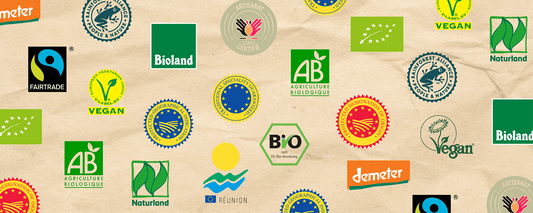What Makes a Great Artisan Hot Sauce and Chili Oil – And Where to Find Them
Hot sauces and chili oils have been used for centuries to bring heat, depth, and complexity to food. From fermented Mexican salsas to crunchy Asian chili oils, the world of spicy condiments is incredibly diverse. But with so many flavors, heat levels, and cultural influences, where do you begin your spicy adventure?
In this guide, we’ll explore their history, types, heat levels, and some of Europe’s best small-batch hot sauce makers. Ready to dive into the world of hot sauces and chili oils? Let’s get started!
What are Hot Sauces & Chili Oils and how do they differ?
Hot sauce and chili oil are both spicy condiments, but they differ in ingredients, texture, and sometimes even usage. Hot sauce is typically a liquid blend of chili peppers, vinegar, spices, and sometimes fruits, often fermented or aged to develop complex flavors. It’s commonly used as a finishing sauce, added directly to food for an extra kick of heat and acidity. From Louisiana-style vinegar-based sauces to rich, fermented blends like Sriracha, hot sauces come in a wide range of flavors and heat levels.

Chili oil, on the other hand, is an oil-based infusion made by steeping dried chilies, garlic, and aromatics in hot oil. It originates from China and Southeast Asia, where it’s used as a seasoning for dumplings, noodles, and stir-fries. Unlike hot sauce, which delivers an immediate burst of tangy heat, chili oil builds a layered, aromatic spice with bits of crispy chili flakes, garlic, and sometimes even nuts and sesame seeds, like in Peanut Rayu for extra crunch.
Once staples in Asia, Latin America, and the Southern U.S., hot sauces and chili oils are now widely popular in regions where spicy flavors were once less common—including Europe and even Germany. Their appeal goes beyond just heat; these fiery condiments elevate dishes with bold flavors, from tangy and smoky to fruity and umami-packed. They also deliver an addictive rush, triggering endorphins that keep spice lovers coming back for more. Once a rarity, spicy condiments of all kinds are now filling the shelves of specialty stores, delicatessen online shops, and even mainstream supermarkets, proving that the love for heat knows no borders.
A Brief History of Hot Sauce & Chili Oils
Hot sauce has been around for thousands of years, with its origins tracing back to Central and South America, where chili peppers naturally occur. The Aztecs, as early as 7000 BCE, used chilies for flavor, medicine, and even warfare, creating some of the first chili-based pastes. When Christopher Columbus arrived in the Americas in 1492, he mistook chilies for black pepper and later introduced them to Europe. From there, Portuguese and Spanish traders spread them across Africa and Asia, where they became a staple in cuisines from India and China to Southeast Asia. By the mid-16th century, chili-infused oils had become essential to many Asian dishes, from stir-fries to dumplings.
Over time, different cultures developed their own ways of preserving chilies. Fermented chili sauces emerged in China, Korea, and the Caribbean, while the Southern U.S. popularized vinegar-based hot sauces. In 1569, Hungary began cultivating paprika peppers, grinding them into a fine powder that became a hallmark of Hungarian cuisine.

Fast forward to the early 19th century, when the first commercial hot sauces appeared, with Tabasco becoming the first mass-produced hot sauce in 1870. By the 20th century, chili oil had become a staple in Chinese households, though it wasn’t until 1997 that the now-iconic Lao Gan Ma Spicy Chili Crisp was commercially produced. Later, Sriracha, a Thai-style chili sauce popularized in the U.S., introduced another bold flavor to the growing hot sauce industry.
Today, hot sauces and chili oils have evolved into a global phenomenon and staple in most kitchens, with flavors and heat levels tailored to different culinary traditions. From fermented and vinegar-based sauces to infused oils and chili crisps, the world of spicy condiments continues to expand, offering both traditional and artisanal small-batch options that cater to heat lovers around the world.
Understanding Heat Levels – The Scoville Scale
From mild warmth to unbearable fire, chili heat comes in many forms. But how do we measure the burn? The Scoville Scale, developed over a century ago, remains the gold standard for quantifying spice. The man behind it, pharmacist Wilbur Scoville, created the system in 1912 while attempting to develop a heat-inducing ointment. His method allowed chili heat levels to be categorized in a way that is still widely used today.
The Scoville Scale measures the pungency (spiciness or "heat") of chili peppers and other substances in Scoville Heat Units (SHU). It determines how much a chili extract must be diluted with sugar water before the heat becomes undetectable. The key component responsible for spiciness is capsaicin, and the higher the concentration, the hotter the pepper.
At the mildest end, bell peppers measure 0 SHU, containing no capsaicin at all. Jalapeños (2,500–8,000 SHU) provide a gentle heat often found in salsas and milder hot sauces. Habaneros (100,000–350,000 SHU) bring a fruity yet significantly spicier kick, making them a favorite for intense, flavorful hot sauces like the ones crafted by SWET. On the extreme end, ghost peppers (850,000–1,000,000 SHU) and the infamous Carolina Reaper (up to 2,200,000 SHU) push the limits of heat. Furthermore, in 2023, Guinness World Records recognized Pepper X (2,693,000 SHU) as the world’s hottest chili pepper. These ultra-hot varieties are used in challenge-level sauces, designed only for the most daring heat seekers.


While many hot sauce makers still use the Scoville Scale to categorize heat intensity, some brands opt for a simplified 1–10 scale, where 1/10 represents low heat and 10/10 stands for extreme spiciness.
However, heat is more than just a number. A well-crafted hot sauce has depth and complexity, balancing spice with flavor—whether smoky, tangy, fruity, or umami-rich—rather than just sheer intensity. A good rule of thumb: the hotter the pepper, the more careful you should be—start small and build your tolerance gradually.
✹ Pro Tip: Want to tone down the heat of a spicy sauce? Mix it with honey, butter, or yogurt to soften the burn without losing the flavor.
Signature Spicy Condiments from Around the World
Every region and culture has its own way of adding heat into its cuisine, using different ingredients, preparation methods, and preservation techniques. From fermented pastes to vinegar-based sauces and oil-infused condiments, these spicy staples reflect the unique flavors and traditions of their cultures. Below are some of the most iconic types of spicy condiments from around the world:
Chili Vinegar Sauces (United States, Mexico, Caribbean)
Made from chili peppers, vinegar, and salt, resulting in a tangy, sharp heat. They are widely used in Louisiana-style Cajun and Creole cuisine, Mexican street food, and Caribbean dishes. Mustard-based variations, particularly in the Southern U.S. and the Caribbean, add an extra layer of pungency and depth, which are popular for barbecue and marinades.
Fermented Chili Pastes (Korea, China, Thailand, Indonesia, Southeast Asia)
Aged chili pastes that develop deep umami flavors. Examples include Korean gochujang, Chinese doubanjiang, Thai nam prik pao, and Indonesian sambal variations (some of which include shrimp paste and lime).
Fruit-Based Hot Sauces (Caribbean, Latin America, Hawaii)
Combining tropical fruits like mango, pineapple, and passion fruit with chili peppers, these sauces balance sweetness with spice. Some Caribbean Scotch Bonnet sauces incorporate fruit, giving them a fiery yet sweet profile.
Chili Oils (China, Japan, Thailand)
Infused oils featuring dried chilies, garlic, shallots, Sichuan peppercorns and spices. Variants include Sichuan chili oil (with numbing peppercorns), Japanese rayu (sesame-based), and Thai nam prik pao (with roasted ingredients and a slight sweetness).

Peri-Peri Sauce (Portugal, Southern Africa)
A citrusy, garlic-heavy sauce made with African Bird’s Eye chilies. Known for its balance of acidity and heat, it’s a staple in Portuguese and Southern African cooking.
Roasted & Smoked Pepper Sauces (Mexico, Spain, American Southwest)
These sauces rely on fire-roasted or smoked chilies like chipotle, ancho, and guajillo for a deep, earthy heat. Common in Mexican moles, Spanish sauces, and American barbecue.
Spicy Butter and Fat-Based Sauces (Tibet, India, West Africa)
Thicker, richer sauces using ghee, butter, or palm oil to carry heat. Includes Tibetan chili butter sauces, Indian spiced ghee-based chili blends, and Ghanaian shito (which also includes smoked fish and shrimp).
Tangy Tomato and Pepper Sauces (North Africa, Middle East, Eastern Europe)
Combining tomatoes, chili peppers, and aromatic spices, these sauces include North African harissa, Middle Eastern shatta, and Eastern European adjika, offering a rich and smoky heat.
The Best Artisan Hot Sauce & Chili Oil Brands You Need to Try
In a market overflowing with options, finding a truly exceptional hot sauce or chili oil can be overwhelming. At Gourmie Goods, we’re always eager to discover and learn from artisan hot sauce creators, exploring their process and products. We’ve done the tasting, testing, and research on hundreds of makers, and below are some of the most exciting small-batch hot sauce producers in Europe, in our opinion.
They take their craft very seriously, and it shows—their sauces go beyond just spice. They’re rich and complex in flavor, made with only clean, natural ingredients, and handcrafted in small batches. Whether you’re new to spicy condiments or a seasoned heat lover, there’s a good chance you’ll fall in love with these brands just as much as we have.
SWET (Brussels, Belgium)
A radically natural, small-batch hot sauce brand growing its own chilies on a rooftop farm in Brussels. Founded in 2020, SWET produces hot sauces in limited batches of up to 1,000 bottles, using organic and locally sourced ingredients, including seasonal fruits and hand-milled spices. We haven’t tried a sauce from them that we wouldn’t buy again—every bottle delivers on depth and balance, never just heat for heat’s sake. Their range is accessible to all, with vegan-friendly recipes and heat levels spanning from a mild 4/10 to a fiery 10/10.
White Mausu (Dublin, Ireland)
Bold, Asian-inspired chili oils and rāyus to drizzle, dollop and dip. Founded in Dublin by chefs Katie and Jasper, their journey began with a love for deep, flavorful chili condiments—influenced by Japanese rāyu and the bold chili oils Katie grew up with in Hong Kong. There are so many superfans (us included!) of White Mausu, and for good reason. Their range consist of spicy-not-so-spicy pantry staples—super versatile for drizzling over noodles, eggs, dumplings, and vegetables—but what really sets it apart is the clean, carefully sourced ingredients and the meticulous attention to detail that comes through every jar.
La Chipotlera (Segovia, Spain)
A bold fusion of Mexican tradition and Spanish terroir, La Chipotlera is redefining organic chili sauces with patience, passion, and authenticity. Grown in their own organic chili orchard and garden, their chilies are cultivated by hand, slow-smoked in the only chipotle oven in Europe, and fermented for up to three years—because true flavor can’t be rushed. Their sauces capture the deep, smoky essence of ancestral Mexican techniques, crafted with 100% organic ingredients and an unwavering respect for nature. This is chili done right: slow and with respect for nature.

Maempi (Paris, France)
A Paris-based artisanal brand that elevates spicy condiments to gourmet status. Infused with exotic Madagascar spices and vanilla and crafted without vinegar, their chili purées deliver a fruity, tangy flavor paired with gentle habanero heat. We love this brand because it’s truly unique—finely chopped, melt-in-your-mouth vegetables create a distinctive texture that makes every bite delicious. Made with 100% natural, locally sourced ingredients.
Ready to Spice Up Your Life?
Now that you're equipped with the knowledge of chili peppers and the range of spicy condiments made from them, it’s time to explore the world of artisan hot sauces and chili oils on your own palate. At Gourmie Goods, we offer a curated selection of exceptional spicy condiments from independent makers and chili growers across Europe. Discover their craft and enjoy their products with fast, sustainable delivery straight to your door across Germany and Europe.
Discover artisan hot sauces and chili oils on Gourmie Goods now.

FAQs – Most Asked Questions About Hot Sauces
What is the hottest pepper in the world?
As of 2023, Pepper X holds the Guinness World Record as the hottest chili pepper, measuring 2.69 million Scoville Heat Units (SHU). It was bred by American chili breeder Ed Currie, who also created the Carolina Reaper, the previous record holder.
How do you reduce the heat of a hot sauce?
Mix with honey, butter, or yogurt to mellow the spice level.
What’s the difference between chili oil and hot sauce?
Chili oil is oil-based, made by infusing spices and chilies in fat, while hot sauce is typically vinegar or water-based, focusing on liquid heat and acidity.
How to store hot sauce?
To keep hot sauce fresh, refrigerate after opening to preserve flavor. Store chili oils in a cool, dark place to avoid rancidity. Always check labels, as some fermented sauces don't require refrigeration.
Is hot sauce healthy?
Yes, hot sauce can be a healthy addition to your diet! Chili peppers contain capsaicin, which may boost metabolism, reduce inflammation, and support heart health. For the best flavor and quality, opt for small-batch, natural hot sauces, as many mass-produced versions can be high in sodium and preservatives.
How to Train Yourself to Handle Spicy Food?
Start with milder sauces like jalapeño or chipotle and gradually increase the heat to build your tolerance. Pair spicy foods with dairy products like cheese, yogurt, or eggs to balance the heat, and incorporate small amounts regularly into your meals so your body can adjust over time. You'll be amazed at how easily you can handle hotter sauces without even realizing it!

About author
Baiba Soika
Food writer and Co-founder of Gourmie Goods, Baiba is dedicated to putting good food at the center of modern living, believing food is the foundation of a successful life. With a background in international trade, design, and technology, she brings a unique, multifaceted approach to food industry. When not sourcing products or exploring new brands and trends, you'll find her somewhere near the sea, on the badminton court, doing sudoku, or in the kitchen, crafting simple yet flavorful dishes. Based in Düsseldorf, Germany.





